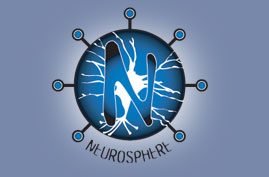Digital Living
Network Infrastructure for the Neurosphere
In my day job, I contribute to the efforts of this group. Multilateral efforts like these come and go – it is very difficult, especially for large companies, to both embrace standards and still exploit competitive advantage through connectivity among their own devices in a proprietary way. Nevertheless, the inherent forces of evolution driven by individual users seems to force them into some accommodations with interoperability.
“Members of the Digital Living Network Alliance (DLNA) share a vision of a wired and wireless interoperable network of Personal Computers (PC), Consumer Electronics (CE) and mobile devices in the home enabling a seamless environment for sharing and growing new digital media and content services…Digital Living Network Alliance (DLNA) today (On September 27, 2005) announced its Certification and Logo Program of the DLNA Home Networked Device Interoperability Guidelines 1.0. The program is aimed at verifying that products designed to the guidelines meet DLNA’s certification testing requirements.”
http://www.dlna.org/home
